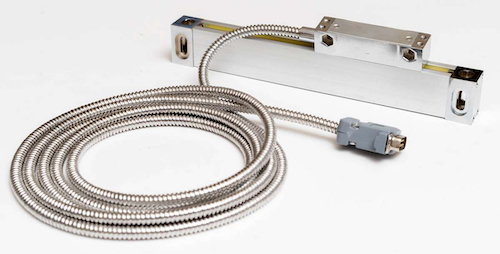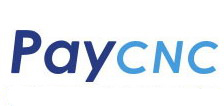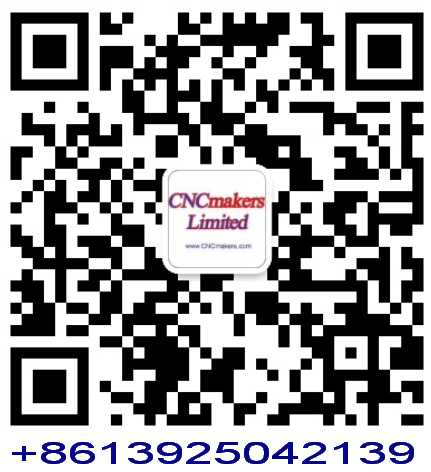Magnetic or Glass Scales

Most modern glass and magnetic scales are interchangeable. That is to say that they use the same power supply voltage (0-5V DC in majority of the cases) and output the same type of signal. It could be TTL, also called single-ended, and RS422, also called differential. Any DRO that works with TTL scales can use TTL or RS422 scales; most DROs that work with RS422 can work with TTL scales as well, but you'll loose some noise resiliency with very long cable runs. One caveat is the "Reference" line, which might not be compatible between different scale brands, but in case of Chinese DROs it's irrelevant most of the time.
The main difference between glass and magnetic scales is how they measure the distance:
Glass scales have a precisely etched glass strip with finely spaced lines and an opto-interrupter array that rides on that strip. The scales use Vernier principle to obtain 5-micron or 1-micron resolution from the grid that is spaced at larger intervals.
Magnetic scales use magnetoresistive sensor array (Hall effect) and a magnetic tape with 5mm or 2mm pole-to-pole distance. The sensors produce two analog sinusoidal analog signals 90 degrees apart (sine and cosine), and use a sine/cosine interpolation algorithms to produce 5 micron or 1 micron resolution respectively.
Glass scales are easier and cheaper to make. Partially this is due to the economy of the scale (glass scales are much more common) and partially to the fact that the electronics involved in reading and conditioning the signal are much less complicated. Moreover, glass has very low coefficient of thermal expansion, so the scales are very stable. Finally, the reader outputs pulses that only need to be amplified, so the accuracy is determined only the quality of the etching and the sensor. As a result, dollar-for-dollar, glass scales are more accurate and repeatable. In particular, even the cheapest Chines scales are very accurate (low-end manufacturers still buy off-the-shelf encoders and glass strips, so they can't cut corners there).
The main three drawbacks are:
1. They come in fixed sizes. They are hard to cut (although possible with care) and there is upper limit to how long they can be.
2. The scale is physically larger, so they don't work very well for tight quarters
3. If mounted incorrectly, moisture and dirt can get it and cause problems. (In most cases the scale can be cleaned relatively easily, though)
4. Since the reader is mechanically decoupled from the external head, glass scales can tolerate a lot of misalignment in all directions.
Magnetic scales are less common and inherently more expensive to make. First of all, interpolation electronics must have very tight tolerances: maximum delta between sine and cosine signal is under around 4V with 5Vcc; 5 micron scales have to interpolate 5mm pole-to-pole distance by splitting 4V into 1000 discrete values, so any noise or temperature drift will affect the accuracy. Second, magnetic tape has to be very uniform, consistent and temperature stable, which requires exotic materials and very precise process. All this costs money. Finally, there are several types of interpolation mechanism. Each is a tradeoff between speed, accuracy and cost. Fast, accurate and cheap does not exist. High-end scales are very fast and accurate, but cost a lot of $$$. Low-end stuff uses fast and cheap approach, but sacrifices accuracy (due to lower noise resistance and lack of error correction mechanism). Moreover, magnetic tape is a great place to cut costs, so many Chinese scales come with what is basically refrigerator tape and have relatively large non-linear error. (if accuracy really matters in your application, make sure you at least get the magnetic tape from a reputable brand).
Magnetic scales have a few important benefits:
1. They are less bulky, and can therefore be used in tight quarters or on smaller machines
2. The tape comes in huge rolls, so magnetic scales are a good option for very long axis travels (and will likely be more accurate than a rack-and-pinion, or belt and rotary encoder setup)
3. Magnetic scales are almost immune to coolant and lubricant ingestion.
4. Components are sold separately, so they are very DIY friendly. I.e. you can buy the reader and any length of tape and make your own scales.
The main drawbacks are:
1. Magnetic scales are EXTREMELY sensitive to misalignment and tape-to-sensor distance fluctuations. The sensor has to be mounted very accurately maximize signal-to-noise ratio; the scale will "work" with some misalignment, but the reading will be inaccurate.
2. Magnetic particles between the tape and the sensor can throw off the reading
3. Low-cost magnetic tape [usually] uses poor quality materials. This means that the magnetic filed is inconsistent, and very often the adhesive is not chemical resistant (WD-40, for instance, can over time affect the tape).
#1 and #2 are VERY important if you care about the accuracy of your DRO. The error introduced by noise, swarf, and uneven distance is very hard to spot. A DRO is a precision instrument, so it pays to take precautions to minimize the chance of this error. This means that you should read and carefully follow the instructions from the manufacturer. I see statements along the lines of "I had this scale under a pile of chips and it still works, therefore magnetic scales are bullet proof". They are NOT bullet proof. Just because you get a reading that includes ten-thousandths of and inch, doesn't mean that the reading is accurate.
So, the bottom line is that glass and magnetic scales have their strengths and drawbacks. Glass scales dominate the DRO market because they offer a great balance of price, accuracy and durability. For a given quality/accuracy, glass scales will be about 2-3x cheaper. Magnetic scales, on the other hand, offer more mounting flexibility and are the only option in some cases. I usually recommend glass scales if you can find a model that fits your machine, and magnetic scales for tricky mounting situations. For example, on small and mid-sized lathes, a long 5-micron glass scales for the Z axis (apron travel) will be cheaper and easier to mount. For the cross slide, a low profile 1-micron magnetic scale will often be a good choice. On a mill, glass scales often fit very well, except on the quill. In this case a magnetic scale with some creative mounting is often the only option.
 USD
USD




